With Canada’s 150th birthday approaching, have you wondered what Canada looked like at the time of Confederation – or even earlier? If you’ve ever wanted to step back in time and see what much of Canada looked like hundreds of years ago, all without leaving the province then the Agawa Canyon Railway Tour is a great window to the past.
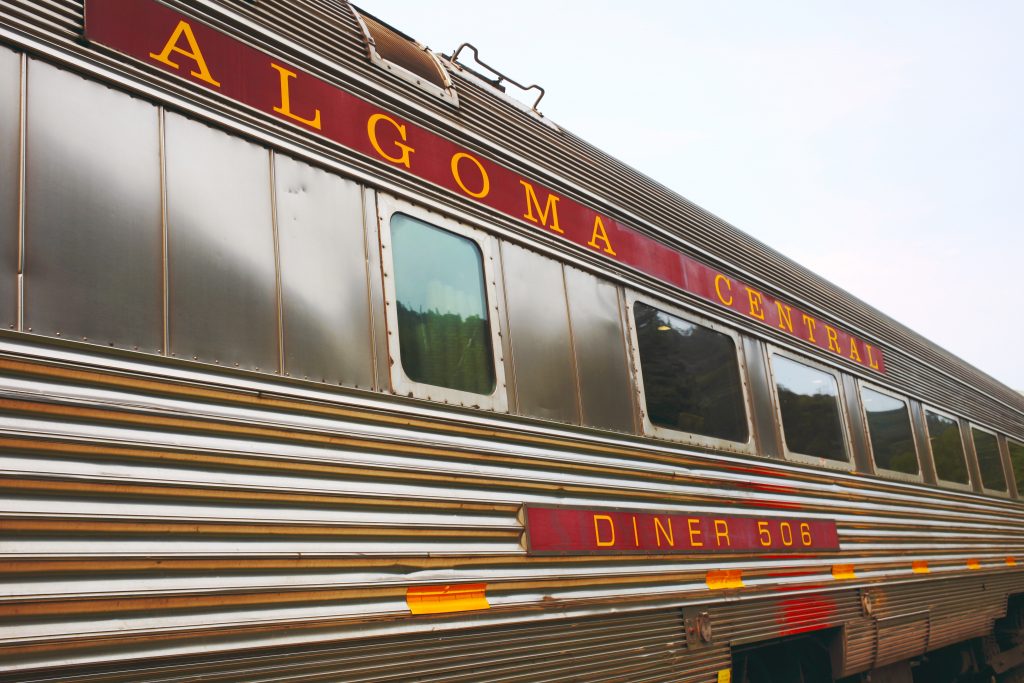
Most of the 10 hour round trip train ride into the Agawa Canyon is out of reach of cell service – phones and tablets read “no service” and teens, tweens, and some hyper-connected adults may hyperventilate a little. It’s part of the rugged charm of being so remote that most of the places seen from the train are not accessible by car because there are no roads. The only way into the park is by train or backcountry hiking (the train is by far the more relaxing of the two options). Everyone needs to step back, take a deep breath, and resist the urge to panic. A day out of cell phone contact is not the end of the world; everything will still be there when you return to full signal strength. Plus who wants to be on social media when there is breathtaking natural scenery everywhere you turn? Instead of connecting to Wi-Fi, you can take the time to connect with your family and with the depth and breadth of the great Canadian wilderness.
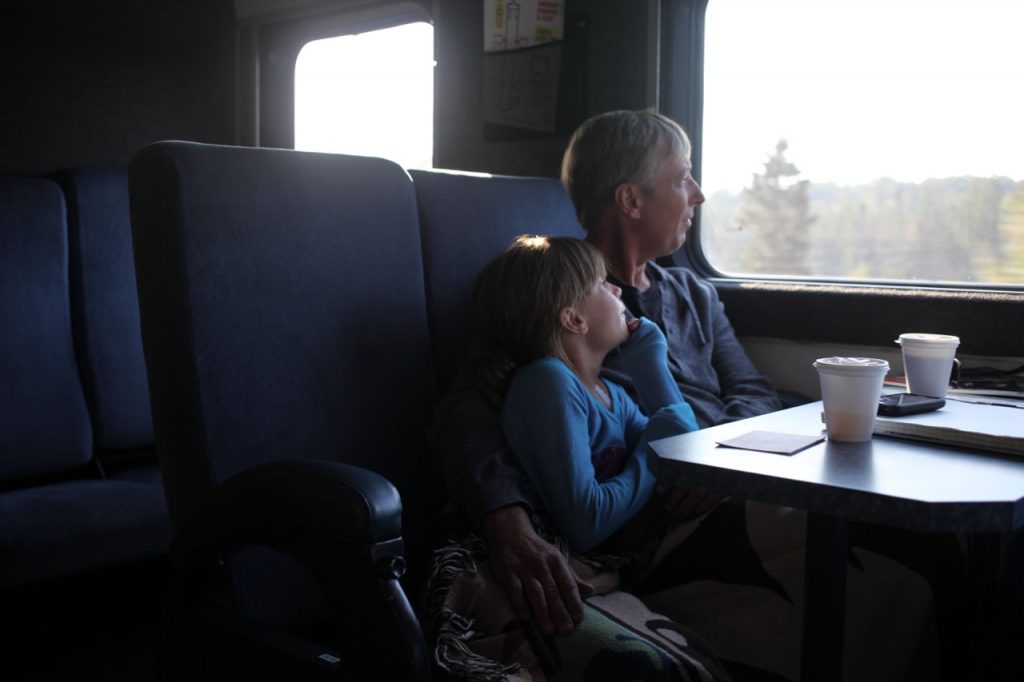
The Algoma Central Railway broke ground in 1900 in Sault Ste. Marie and completed to Hearst in 1914 after plans to continue it further north to Hudson’s Bay were abandoned. The railway’s initial purpose was to carry resources and material into Sault Ste. Marie, but now the train carries only passengers yearning to explore somewhere still untouched by the modern world. When the train arrives at Mile 114, otherwise known as Canyon Park, you won’t find chain restaurants, strip malls, or amusement park rides waiting for you. Instead, you will find pristine natural beauty, all at the bottom of the Agawa Canyon.
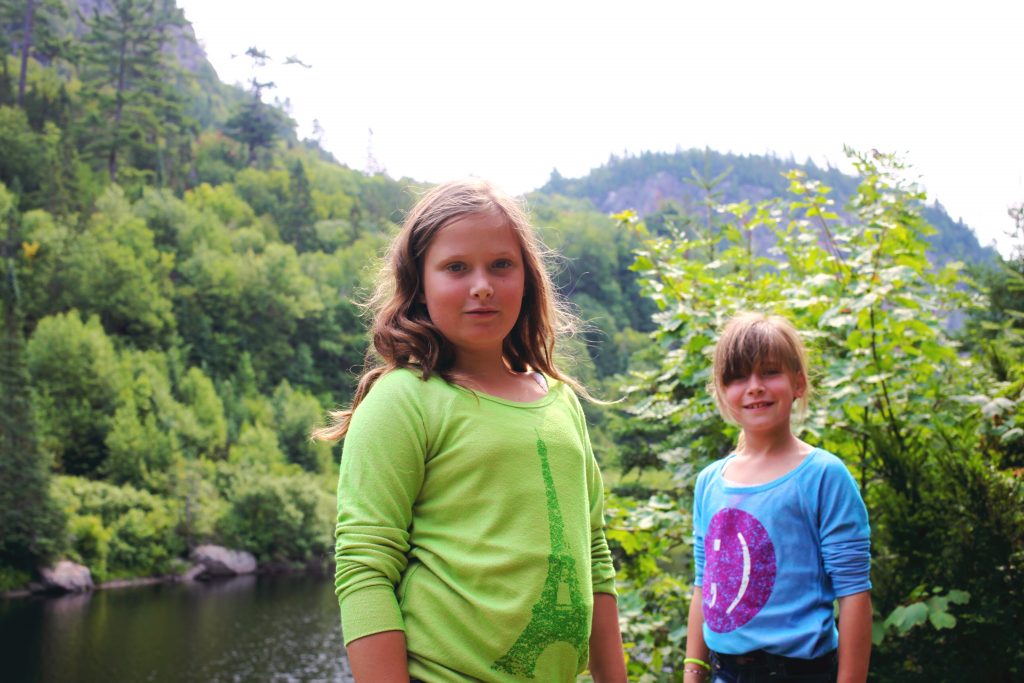
As we rode the rails deeper into the Agawa Canyon, I kept thinking to myself that this is how most of Canada looked when the first settlers arrived hundreds of years ago: rugged, vast, dense, and breathtakingly beautiful. I felt very small in comparison to the vastness surrounding me. My children, conversely, felt like giants as they saw their country with fresh new eyes and a sense of awe. They had so many questions about what they were seeing. How long does this go on? Do people actually live out here? Are there bears in the forest? How was the railway built? How many people did it take to build the railway? What happened in the winter when it was snowing? Are we going to see a moose?
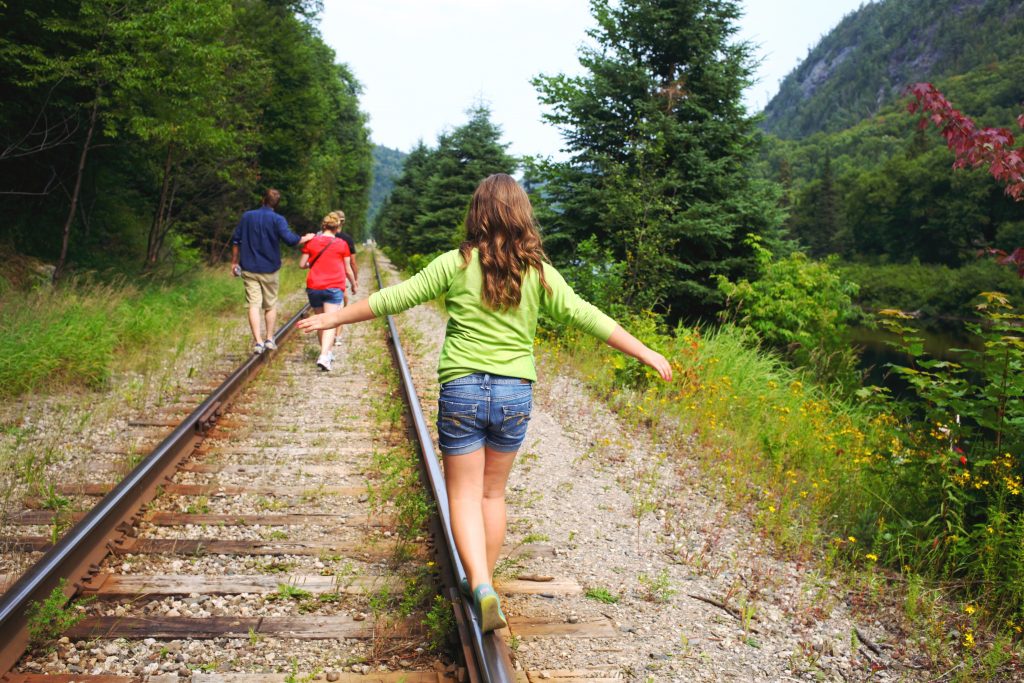
Thankfully, I didn’t need to answer any of those questions because the train has flat screen televisions throughout that have GPS triggered commentary. Passengers will learn about the history of the Algoma Central Railway, told in a way that brings history to life. The commentary is peppered with fun facts like the one about the special whistle that had to be invented to scare off moose because some moose like to charge moving objects such as trains. My kids loved this fact and now think that moose are at Clint Eastwood coolness levels.

Spoiler alert – we did not, in fact see any moose. However, when we stepped off the train, I felt like an explorer touching down on uncharted soil (despite the fact that well over 300,000 people have made this journey before me). Seeing the natural beauty that surrounded me, it was easy to see why so many of the members of the Group of Seven came here for inspiration. From the towering height of the canyon itself to the black and gold waters of the Agawa River, to the rushing waters of Black Beaver Falls, artistic inspiration is everywhere.
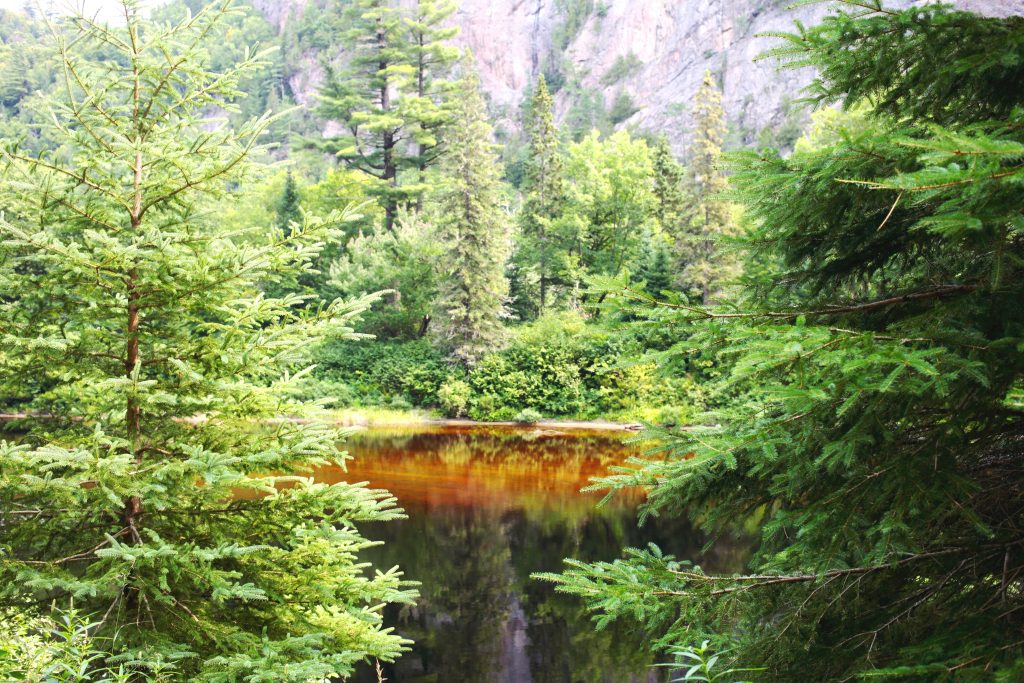
After our hour and a half layover in the park, we re-boarded the train for the journey back to Sault Ste. Marie. Like the journey there, it was leisurely, unhurried, and full of time to talk. As a family we snuggled, napped, gazed at the landscape zipping by, and pondered coming back to do some of the adventure trips on offer. We were torn between snowmobiling in the winter and camping in a rail car at the bottom of the canyon in the summer. As we approached the end of our journey, I noticed that I once again had cellular service so I did the only thing I could think of: I slipped the phone back into my purse and enjoyed being out of reach for just a bit longer.
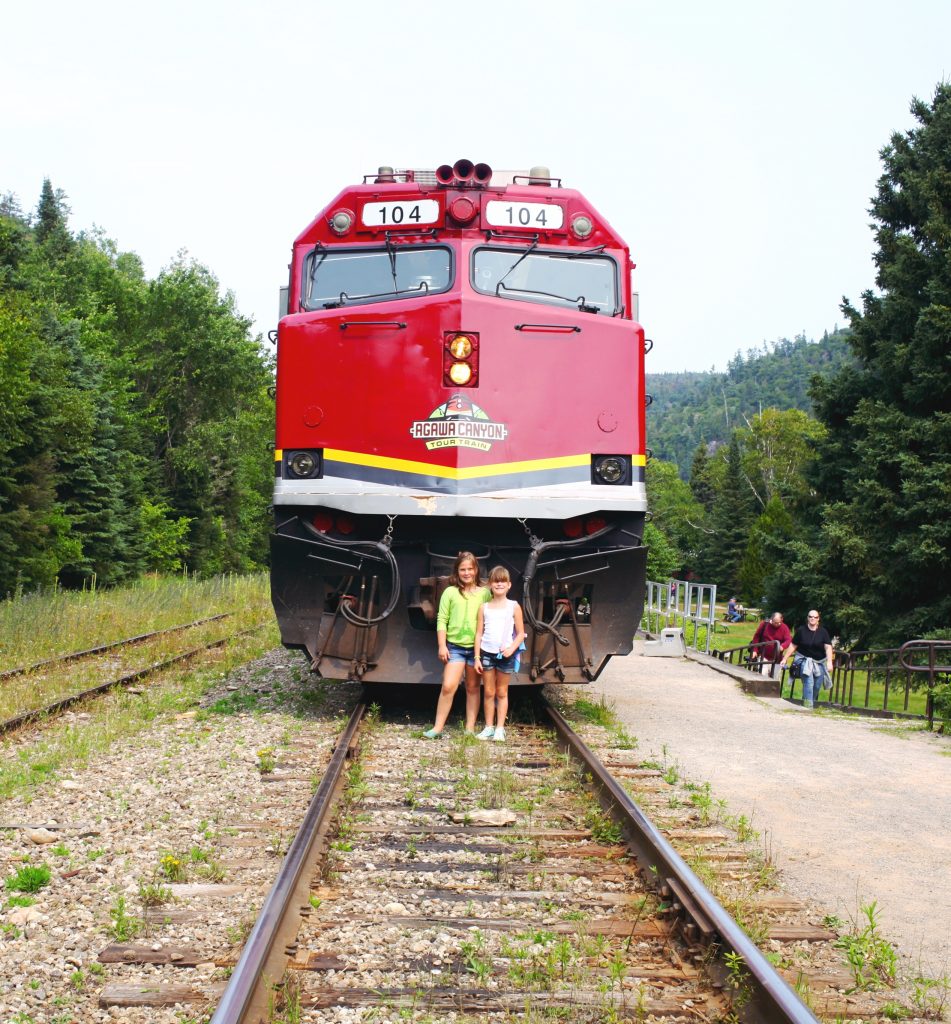
If You Go:
Bring on the train:
- A Picnic lunch if you’re so inclined; otherwise you can enjoy both breakfast and lunch in the dining car.
- A Blanket – the train can get a bit chilly and a soft blanket is great for napping with
- Your Camera – (fully charged) – you’ll want to take lots of pictures
- Playing cards, colouring books, reading books – some quiet entertainment for everyone.
Stay:
- At Glenview Cottages and Campground. This lovely campground keeps you in the wilderness state of mind. If you are bringing your own accommodations, like we did, they have a great site for RVs with pull-thrus and full service hook-ups available. If you prefer buildings, there are camper cabins and cottages on site to rent. The location is very central – so you’re not far from any of the area attractions. As an added bonus there’s an indoor hot tub and sauna, and an outdoor pool for the summer.
See:
- Sault Ste. Marie isn’t a day trip – but you wouldn’t want it to be when there’s so much to do in Algoma Country! You should visit Pancake Bay Provincial Park – voted best beach on both sides of Lake Superior. You can also tour the Canadian Bushplane Heritage Centre to see how bushplane and forest fire operations have changed over the years. Explore the natural beauty of the area by car, RV, rail, ATV, boat, or snowmobile.


 Unleash the Magic of Dogsledding in Mont Tremblant with Expedition Wolf
Unleash the Magic of Dogsledding in Mont Tremblant with Expedition Wolf